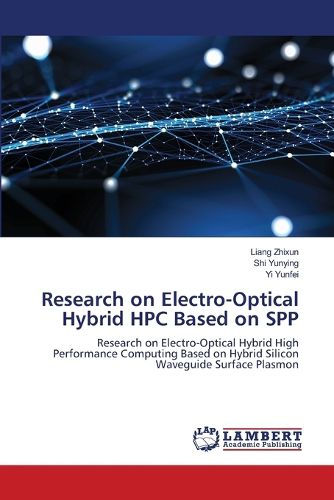Readings Newsletter
Become a Readings Member to make your shopping experience even easier.
Sign in or sign up for free!
You’re not far away from qualifying for FREE standard shipping within Australia
You’ve qualified for FREE standard shipping within Australia
The cart is loading…






This title is printed to order. This book may have been self-published. If so, we cannot guarantee the quality of the content. In the main most books will have gone through the editing process however some may not. We therefore suggest that you be aware of this before ordering this book. If in doubt check either the author or publisher’s details as we are unable to accept any returns unless they are faulty. Please contact us if you have any questions.
The application of SPP has created possibilities for the size of photonics devices compared to the operating wavelength. However, SPP has severe Ohmic attenuation and significant optical insertion loss, resulting in limited optical signal transmission distance. To eliminate the above situation, we used a silicon waveguide with hybrid mode SPP, and provide relevant theoretical and analysis. Hybrid SPP silicon waveguides, and then provide design methods for electro-optic hybrid half adders, full adders, subtractors, and multiplications based on SPP, and provide detailed discussions and verifications in this book. Finally, the design and research of temperature sensors for on-chip networks were also involved. The mode of electro-optic hybrid computing not only utilizes the advantages of high-frequency operation, electromagnetic immunity, and low power consumption in optics, but also takes advantage of the ease of storage in electrical engineering. The technical solutions and experimental results described in this book, which provide theoretical and practical references for the implementation of electro-optic hybrid computing.
$9.00 standard shipping within Australia
FREE standard shipping within Australia for orders over $100.00
Express & International shipping calculated at checkout
This title is printed to order. This book may have been self-published. If so, we cannot guarantee the quality of the content. In the main most books will have gone through the editing process however some may not. We therefore suggest that you be aware of this before ordering this book. If in doubt check either the author or publisher’s details as we are unable to accept any returns unless they are faulty. Please contact us if you have any questions.
The application of SPP has created possibilities for the size of photonics devices compared to the operating wavelength. However, SPP has severe Ohmic attenuation and significant optical insertion loss, resulting in limited optical signal transmission distance. To eliminate the above situation, we used a silicon waveguide with hybrid mode SPP, and provide relevant theoretical and analysis. Hybrid SPP silicon waveguides, and then provide design methods for electro-optic hybrid half adders, full adders, subtractors, and multiplications based on SPP, and provide detailed discussions and verifications in this book. Finally, the design and research of temperature sensors for on-chip networks were also involved. The mode of electro-optic hybrid computing not only utilizes the advantages of high-frequency operation, electromagnetic immunity, and low power consumption in optics, but also takes advantage of the ease of storage in electrical engineering. The technical solutions and experimental results described in this book, which provide theoretical and practical references for the implementation of electro-optic hybrid computing.